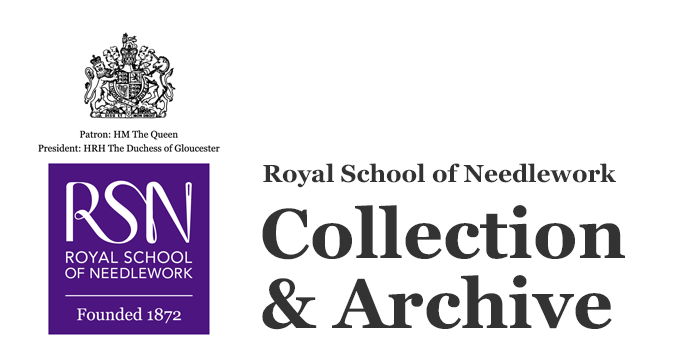Bodice and skirt
Object name
Date made
1960s
Place made
Description
1960s bodice and matching long skirt with floral and mirror embroidery.
Content description
A 1960s bodice and floor length skirt in black linen with orange-brown and beige embroidery. The bodice of the dress is sleeveless and has a high scooped neck. The back of the bodice includes five buttons lining the spine. The skirt has a zippered closure. Both bodice and skirt are lined in dark purple silk and include a small woven tag with the letter 'S' on it. The bodice has an accompanying tag that says 'MADE INDIA'.
The design covering the skirt consists of alternating eight-petalled flowers in beige and orange-brown silk thread embroidery and small, circular mirrors encircled with the same beige and orange-brown cotton embroidery, connected to each other via chain stitched diagonal lines wrought in gold thread. The flower petals are worked in narrow herringbone stitches edged with gold chain stitches. At the centre of each flower is one circular mirror. The mirrors are fastened down with shisha (variation 2) stitches in black silk thread, embellished with satin stitches. This flower and mirror design is reflected across the neckline, with two mirrors between each flower. The mirror embroidery involves shisha, small, embroidery-framed mirrors which decorate Banjara embroidery. Banjara embroidery is created by the Banjara tribe of India. The bodice and skirt's production in India, already made evident by the tag inside the bodice, is further strengthened by the inclusion of shisha. This outfit would have been made in India for the tourist or export market.
While the shape and length of this dress were frequently seen in evening dress of the later 1960s, the embroidery is unique. This dress reflects the ladylike elegance and A-line cuts popular during the 1960s, thanks to the influence of Jackie Kennedy.
The design covering the skirt consists of alternating eight-petalled flowers in beige and orange-brown silk thread embroidery and small, circular mirrors encircled with the same beige and orange-brown cotton embroidery, connected to each other via chain stitched diagonal lines wrought in gold thread. The flower petals are worked in narrow herringbone stitches edged with gold chain stitches. At the centre of each flower is one circular mirror. The mirrors are fastened down with shisha (variation 2) stitches in black silk thread, embellished with satin stitches. This flower and mirror design is reflected across the neckline, with two mirrors between each flower. The mirror embroidery involves shisha, small, embroidery-framed mirrors which decorate Banjara embroidery. Banjara embroidery is created by the Banjara tribe of India. The bodice and skirt's production in India, already made evident by the tag inside the bodice, is further strengthened by the inclusion of shisha. This outfit would have been made in India for the tourist or export market.
While the shape and length of this dress were frequently seen in evening dress of the later 1960s, the embroidery is unique. This dress reflects the ladylike elegance and A-line cuts popular during the 1960s, thanks to the influence of Jackie Kennedy.
Dimensions
width: 43cm
height: 41.5cm
width: 48cm
length: 106cm
height: 41.5cm
width: 48cm
length: 106cm
Materials
Stitches
Techniques
Motifs
Catalogue number
COL.23.a-b
Other numbers
RSN 1096
© Royal School of Needlework

